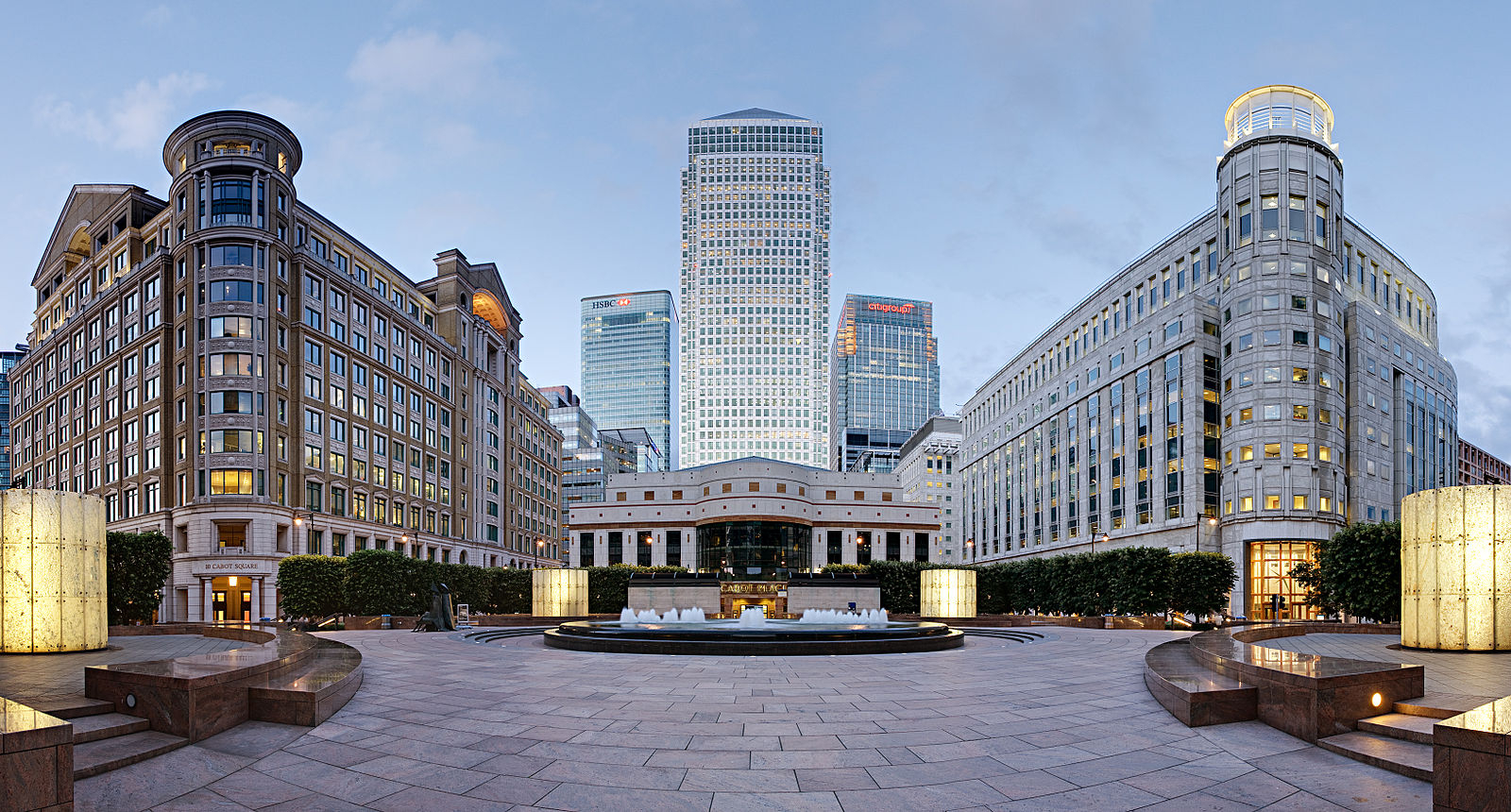
Tower Hamlets could be affected by potential job exports to the EU Pic: Wikimedia Commons
Apart from the prospect that some Canary Wharf-based bankers will relocate as a result of Brexit, the success of Emmanuel Macron in the recent French election may also prompt the commercial sector to move from Tower Hamlets.
This comes just as some of the largest residential estates are set to open. Such developments and demographic predictions remind us of the poverty that the borough of Tower Hamlets continues to face.
Tower Hamlets is home to Canary Wharf, the centre for the largest banks and financial institutions which continue to retain London’s role as a global economic hub.
Partly due to Canary Wharf’s concentration of high household incomes compared to outside the area, Tower Hamlets has one of the most drastic levels of wealth inequality, a middle class hardly visible.
A Tower Hamlets Local Economic Assessment from 2010 noted: “The very wealthy and the very poor predominate in Tower Hamlets, with little bridging them economically or socially.”
In 2012 and 2013 a Tower Hamlets Fairness Commission recorded that in the borough the poor and the rich live visibly alongside one another.
In 2017 the borough continues to be the most unequal with 8.8 per cent of its residents unemployed and 44 per cent of its children impoverished. The most common household annual income in Tower Hamlets was recently recorded as £17,500 while 17 per cent of the borough has an annual income upwards of £60,000.
It is said that such a discrepancy in wealth can be detrimental to the way that both the borough and greater London community operates.
The above visualisation expresses that 48.7 per cent of households in the borough have an income that is less than £30,000 annually while 17 per cent of the borough’s households have an annual income that exceeds £60,000. An equal 17 per cent of households have an annual income of less than £15,000 which is less than half of the median household income in Greater London.
Denise Bentley, the chief executive of First Love Foundation told Eastlondonlines: “Families more than ever before have to choose between staying in the borough and leaving. We don’t see generational unemployment or a lack of money for food, we see people with no income at all who want to work like the people around them in Canary Wharf but who find income barriers insurmountable.”
Regardless of potential demographic changes in the area, Canary Wharf Group has plans for great development to the residential area of Canary Wharf estate. Called the New District, it will officially launch in 2018 and will include hospital services, apartment complexes and a number of retail spaces.
These developments have been planned in an arguable attempt to entice more dwellers to the area and to appeal to workers who, in a survey taken in 2015, claimed that stress and happiness levels are dependent upon their closeness to their place of work.
In one of the phases of development, the new estate is planned to create a significant number of jobs, upwards of 17,000 due to the infrastructure growth in addition to the residential properties. However, the new developments worry locals who fear the complete loss of affordable housing in the area.
The developments are said to bring to Canary Wharf a similar architectural feel to areas in parts of central London such as Carnaby Street. Canary Wharf Group said: “This New District of Canary Wharf will encompass 22 acres, including nine acres of interconnected parks, piazzas, riverside walkways and garden squares to extend the appeal of Canary Wharf as a progressive working and living urban district.”
While such massive developments seem a great contrast to the ever-present poverty in the area, charity organisations (like First Love Foundation) along with large-scale developers (like Canary Wharf Group) have come together in joint efforts to tackle the issues that the borough faces.
“There are people in the borough who have no income and who see those around them visiting the supermarket and going to work which to them is just a pipe dream. We are working in partnership with The City and Canary Wharf to resolve the issues that the borough faces as quickly as possible. All of our models have been developed in partnership to prompt fast and sustainable change,” said Denise Bentley.
The future of Canary Wharf is one that could bring changes to the greater Tower Hamlets area. By 2018, just following the launch of Crossrail, the first phase of developments should be complete. Canary Wharf is ever-expanding and there is now also consideration for the awaited effects that Brexit and Macron’s election will have on the area.
Macron, a former economic minister turned politician and president, has stated objectives that include encouraging those in London and elsewhere to turn to the French Capital, ultimately providing the French economy with an influx of new employment.
He will likely encourage the restriction of UK access to the single market in the hope that Britain will begin to export academics and bankers to Paris. Most of these bankers are currently employed, some with plans to reside in Canary Wharf.
Tower Hamlets held a council meeting today [May 22] to ask private developers to increase the number of affordable housing sites in conjunction with large scale, billion pound developments in the area.
The poverty and great income discrepancy that the borough faces, however, should not be forgotten in light of the changes to come.




